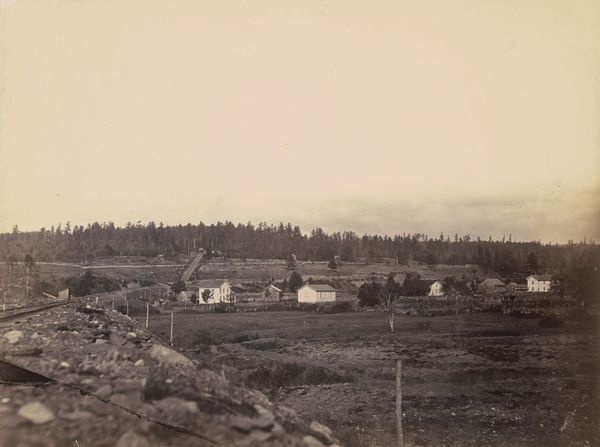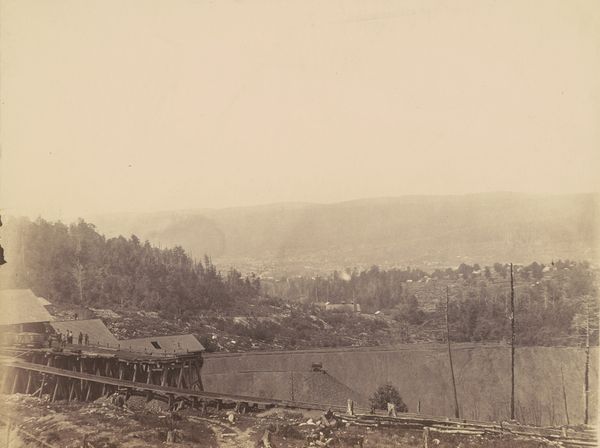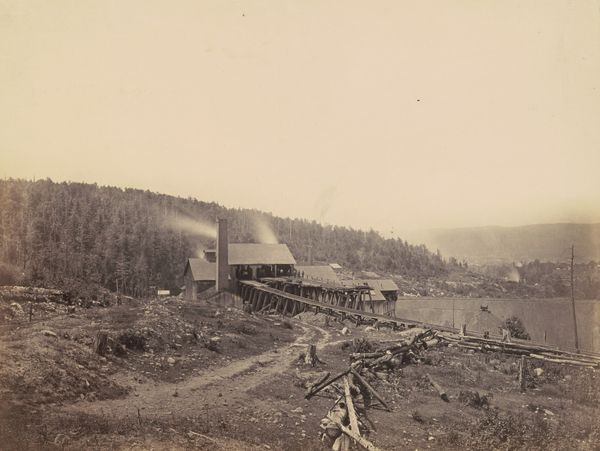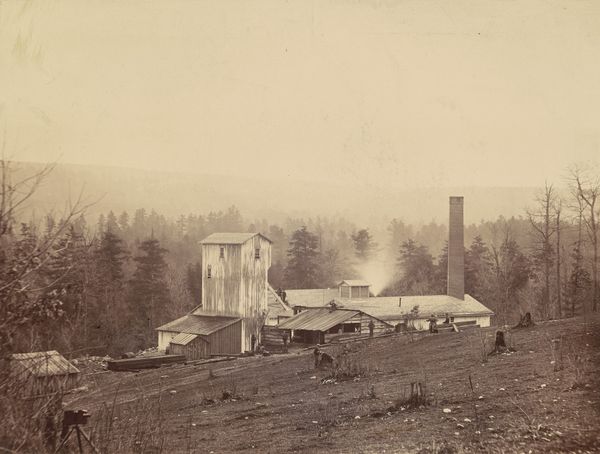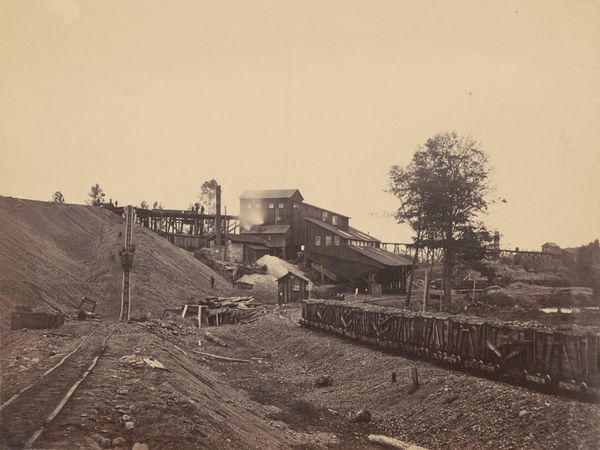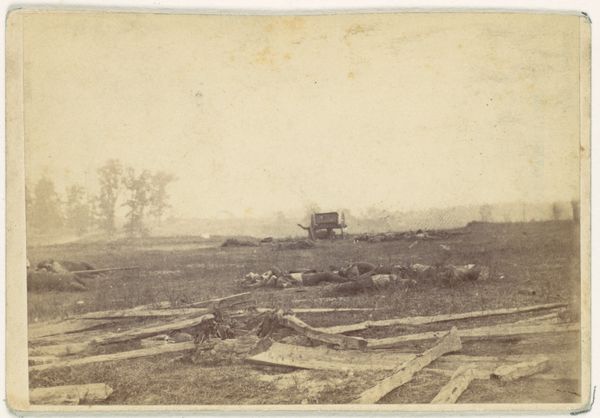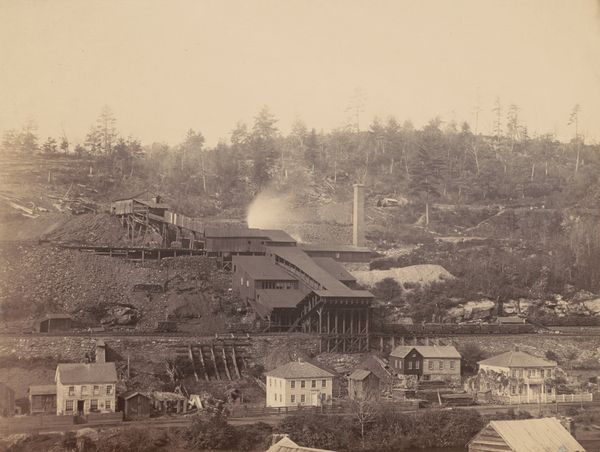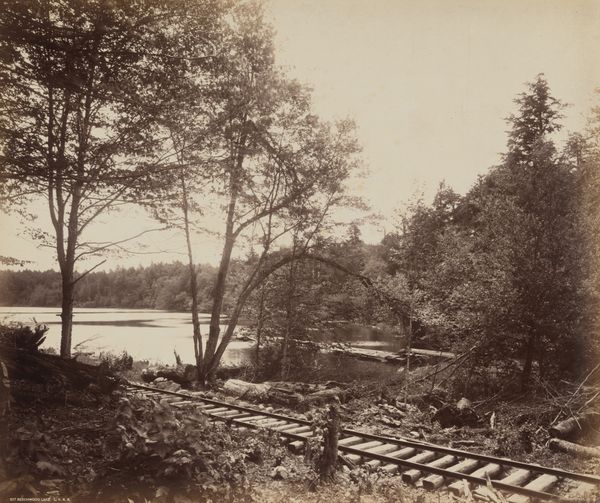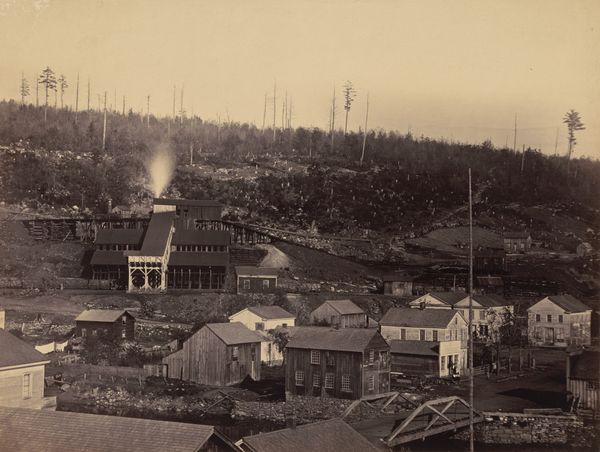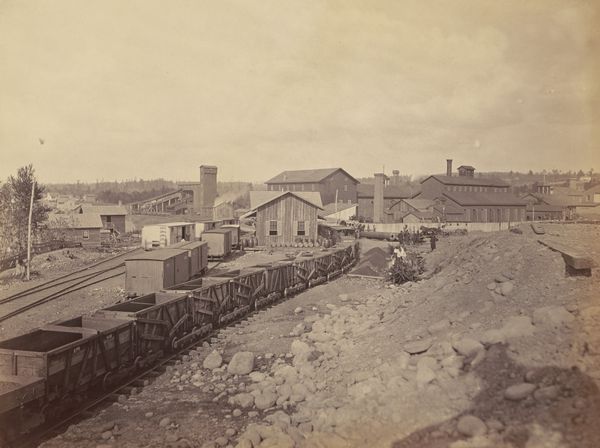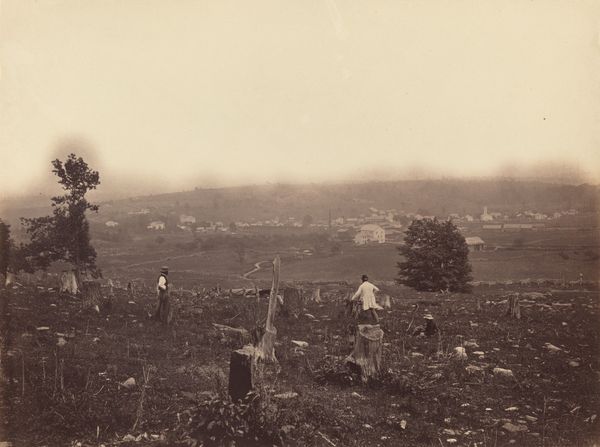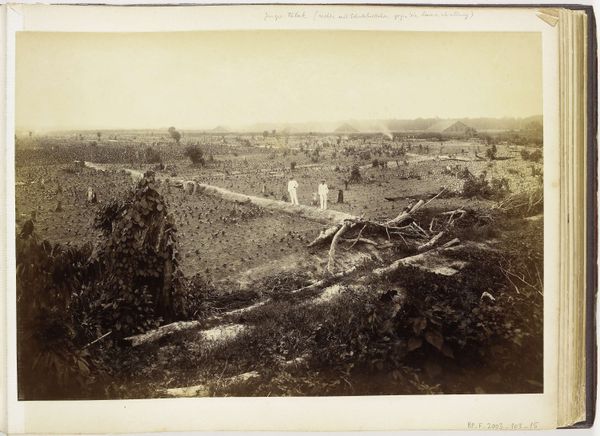
photography, albumen-print
#
landscape
#
photography
#
hudson-river-school
#
albumen-print
#
realism
Dimensions: image/sheet: 30.7 × 40.8 cm (12 1/16 × 16 1/16 in.) mount: 44.3 × 53.1 cm (17 7/16 × 20 7/8 in.)
Copyright: National Gallery of Art: CC0 1.0
Editor: So, this is "On the Moosic, East, Del. & Hudson Canal Co." taken by Thomas H. Johnson sometime between 1863 and 1865. It's an albumen print. There's something haunting about it. I'm curious – what stands out to you? Curator: Immediately, I see a crossroads – visually, yes, with the converging tracks, but also symbolically. Notice the skeletal tree standing starkly amidst the living pines. It acts almost as a memento mori, a reminder of mortality, particularly potent in the context of a landscape undergoing industrial transformation. Editor: The tracks leading toward the town certainly feel like progress, but you're right, the dead tree adds a layer of unease. What else can we read in the photograph? Curator: Think about what the canal represents – a deliberate reshaping of the natural world for commerce. Then, look at how Johnson frames it. The image isn’t simply documenting progress; it’s subtly commenting on its impact. See how the cleared land seems to expose a rawness beneath the surface, contrasting with the romanticized landscapes typical of the Hudson River School. Editor: So, the photo is both an objective record and a cultural statement. Curator: Precisely. The symbols point to broader narratives about industrial ambition, its environmental cost, and the enduring presence of nature. Ask yourself, is this image a celebration, a lament, or perhaps something in between? Editor: I didn't see it that way at first glance, but now I understand the tension Johnson captures. Curator: Visual symbols can speak volumes when we start to unpack them. There's often more than meets the eye, prompting reflection and further exploration of history through the language of images.
Comments
No comments
Be the first to comment and join the conversation on the ultimate creative platform.
